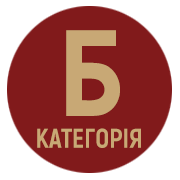COMBINATION OF TRADITIONAL AND INTERACTIVE TECHNOLOGIES FOR STUDENTS OF NON-LANGUAGE SPECIALTIES INVOLVEMENT IN PROFESSIONAL SITUATIONS IN FOREIGN LANGUAGES
DOI:
https://doi.org/10.32782/apv/2022.1.2.18Keywords:
traditional teaching methods, interactive technologies, students of non-language specialties, foreign language, higher educationAbstract
The article is devoted to the research of the peculiarities of the organization of the process of combining traditional and interactive technologies for the involvement of students of non-language specialties in professional situations in a foreign language. The author noted that fundamental changes in the economy due to the growing role of knowledge, the revolution in information and communication technologies, the globalization of the labor market, as well as political changes, dictate new requirements for training, i.e. change the social order of society to prepare in the short term a specialist who is well trained in communicative foreign language competencies. Given the minimum number of hours specified in the curriculum, the current state educational standard of higher professional education, which is a set of requirements required to reconcile the new social order of society with modern requirements, to form foreign language communicative and professional competencies, not an easy task. If earlier foreign language teaching in a non-language university was focused on reading, understanding and translating special texts of scientific style, now it is necessary to think about shifting the emphasis in teaching to develop language communication skills on professional topics and conducting scientific discussions. To achieve this goal requires a combination of traditional and interactive learning, which is based on personality-oriented learning. The purpose of traditional learning is to transfer to students and assimilate as much knowledge as possible. In the context of interactive learning, knowledge takes other forms. On the one hand, they represent certain information about the world around them, and on the other hand, the peculiarity of this information is that students receive it not in the form of a readymade system from the teacher, but in the process of their active work under the guidance of the teacher. The purpose of interactive learning is to create conditions for the teacher to allow students to discover, acquire and construct knowledge.
References
Бєляєв С.Б. Нові технології навчання. Київ : ІЗИН, 1996. 152 с.
Пометун О. Інтерактивні технології навчання: теорія, практика, досвід, Київ, 2002. 141 c.
Кларин М.В. Инновации в мировой педагогике (Анализ зарубежного опыта). Рига : НПУ «Эксперимент», 1995. 176 с
Antonenko O.V. Professional training of foreign language teachers in the context of modernization of higher education in the Czech Republic. Problems and prospects of formation of the national humanitarian and technical elite: a collection of scientific works, 43(47). 2015. 326–331.
Bilyalova A. ICT in Teaching a Foreign Language in High School. Procedia – Social and Behavioral Sciences. 2017. 237. 175–181.
Coyle D. Content and Language Integrated Learning. Motivating Learners and Teachers. London, 2009. Р. 127.
Demchenko O. Creative Realization of the Interdisciplinary Approachto the Study of Foreign Languages in the Experience of the Danube Basin Universities. Journal of Danubian Studies and Research. 2013. Vol. 3. № 1. 94.
Graham Gibbs. Learning by Doing: A Guide to Teaching and Learning Methods, Oxford: First Edition, 2013. P. 30.
Klimova B.F., Kacetl J. Hybrid learning and its current role in the teaching of foreign languages. Procedia – Social and Behavioral Sciences, 2015. 182. 477–481.
Kuts M.O. Problem technologies in foreign languages teaching of higher technical educational establishments students. Cherkasy University Bulletin : Pedagogical Sciences, 2016. 37 (370).
Weller M. Virtual Learning Environments: using, choosing and developing your VLE. New York : Routledge, 2007.







